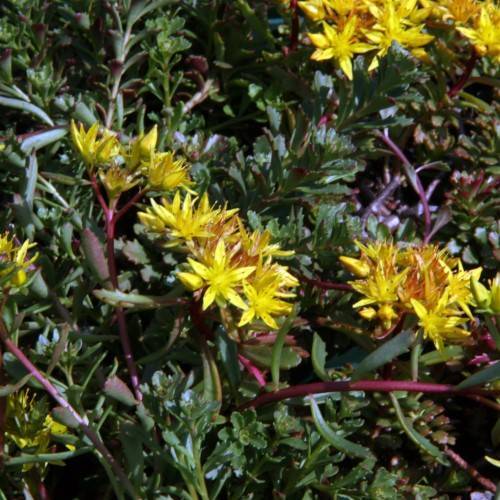
orange stonecrop
Sedum kamtschaticum var. floriferum 'Weihenstephaner Gold'
Cycle:
Herbaceous Perennial
Watering:
Minimum
Hardiness Zone:
3 - 8
Flowers:
Flowers
Sun:
Full sun
Leaf:
Yes
Growth Rate:
Low
Maintenance:
Low
Drought Tolerant:
Yes
Salt Tolerant:
Yes
Care Level:
Moderate
watering
The orange stonecrop (Sedum kamtschaticum var. floriferum 'Weihenstephaner Gold') is a drought tolerant plant and requires minimal water for optimal growth. During the spring and summer, water your orange stonecrop once every 1 to 2 weeks, making sure to avoid excessive moisture. In hot weather, water your plant more frequently. During the fall and winter, reduce watering to every bout 2 to 3 weeks, providing only enough moisture to keep the soil slightly damp. When the temperature does drop below freezing, avoid watering your orange stonecrop completely until the temperature warms back up.
sunlight
Orange stonecrop (Sedum kamtschaticum var. floriferum 'Weihenstephaner Gold') requires full sunlight for most of the day, meaning at least 6 hours of direct sunlight. It is best planted in an area that receives morning light and filtered afternoon sunlight. Direct midday sun is sometimes too much and can lead to the leaves becoming too dried out which impacts the overall health of the plant. With too little light, the plant will become lanky and spindly and the bloom size would be smaller compared to 1 receiving the right amount of sunlight.
pruning
Orange stonecrop should be pruned in spring or early summer when the plant is actively growing, and again in late summer or early fall before the plant starts to go dormant. In spring, pruning should involve removing dead, damaged, and overcrowded stems to enable the plant to put its energy into new growth and flowering. Decide which plant parts should be pruned based on their overall appearance and condition. In late summer or early fall, pruning should involve cutting the plant back to half its size. This will help keep the plant compact and shapely for the winter. Pruning should also reduce the need for deadheading as the plants will have fewer spent blooms. If flower heads are desired for the winter display, try to leave some on the plant while still trimming it back.
